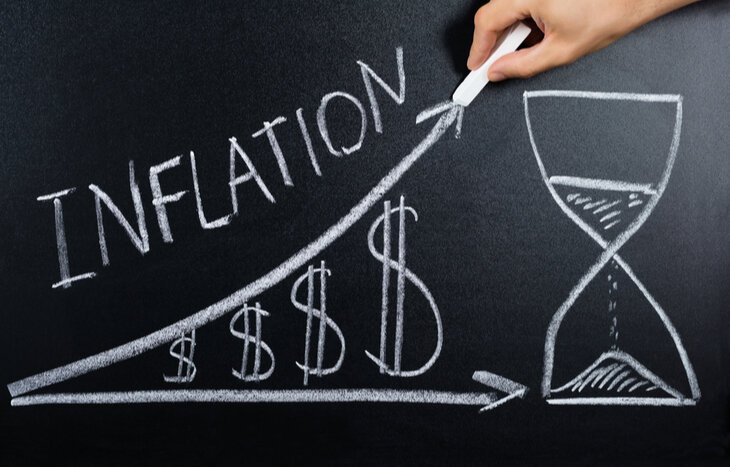Explaining Inflation to Your Child – And Why It Matters
As I’ve mentioned in other posts, my dad held “Dad’s class” on Saturdays throughout my childhood. This special time was set aside so he could teach us basic financial concepts. The things I learned on those Saturdays have paid dividend after dividend, informing the way I earn, save, and invest, even today.
One of the things my dad taught us was the concept of inflation, which is often overlooked when people discuss about saving, investing, and managing money. But understanding inflation is central to understanding why saving and investing is so important.
Inflation is essentially a sustained increase in prices over a particular period of time. Throughout my younger years, when I’d hear people talk about inflation, the “price of a gallon of milk,” was often used to illustrate the concept. As you talk to your kids about what inflation is and why it matters, that example still works.
Holding a gallon of milk is a great visual. You can explain that nothing has changed about the size of the container – a gallon is a gallon – or the contents – milk is milk.
But in 2021, you have to earn more to buy the same amount and type of milk. According to the U.S. Bureau of Labor Statistics, a gallon of milk that cost $2.67 in 1997 costs $3.49 today. That’s about a 31% increase in price, for the exact same item.
This is true for most goods and services – prices increase year after year, which means each dollar you earn has slightly less buying power. Part of the solution is investing your savings, so that your money earns more than the rate of inflation.
Inflation generally rises about 2-3% per year. If your investment earns more than that, you’re staying ahead of the inflation rate. Even a relatively lower risk investment might earn 5% a year, outpacing inflation by 100+%.
Why Does Inflation Occur?
It’s likely that your child will wonder why inflation happens – why doesn’t milk cost the same today as it did in 1997? While inflation can be complicated, you can provide a simple explanation help them grasp the basic idea.
Begin by explaining the concept of supply and demand:
Supply refers to the amount of a particular item. When there are a lot of a particular item available, the supply is high. When there are less available the supply is low.
Demand, on the other hand, refers to the desire consumers have to purchase that item. When the supply is high, the demand (how many people want the product) tends to drop, which drives the price of the product down, making it worth less.
But when there’s less of a product available, the supply is considered low and the demand is typically higher, making the worth of the product higher as well.
Choosing a product your child is familiar with, like retro 11 Nike Jordan basketball shoes, provide a tangible example. In this case, the limited number of retro 11 Nike Jordan’s manufactures keeps the supply relatively low. The number of people who want to buy the shoes is high – that’s the demand. With high demand and low supply, the shoes cost more than they would if the supply was very high.
With respect to about inflation, it’s important for kids to know that our Treasury prints the dollars we use. When they print more money, there are more dollar bills available, which means the supply is high. If the amount of goods doesn’t change (production doesn’t increase), then there’s a lot more money to buy the same good and services for sale. That makes each dollar worth less.
While the details of inflation can be complex, by helping your children understand the idea, you’re planting seeds now to help them make better financial decisions later.
As you talk through this idea, you may want to touch on a couple of other relevant points:
Inflation can vary country to country, with some countries experiencing much higher rates than others at certain times.
There’s also a concept known as hyperinflation, which is when inflation is high and accelerates quickly, making the value of money almost worthless. In World War 1, for example, some Germans used the German mark, which was then their currency, for kindling for firewood because the mark was worth so little. The heat was more valuable to them than their currency.
Without making it sounds scary, explain that inflation – even high rates of inflation – can happen in any country, even the United States. You can use the high price of gas in the 1970s as an example.
Essentially, you want your child to be aware of, and wary of, inflation, which can destroy both personal wealth and the wealth of countries.
And, in the next breath, you want them to understand that through wise investments, they have the power to protect their personal wealth from inflation. That’s a gift they’ll appreciate for years to come.


